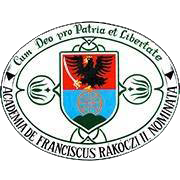Please use this identifier to cite or link to this item:
https://dspace.kmf.uz.ua/jspui/handle/123456789/3355| Title: | Зміна релігійної структури населення на території сучасного Закарпаття в 1851–1941 роках: основні причини й тенденції |
| Other Titles: | Changes in the religious structure of the population on the territory of present Transcarpathia in 1851–1941: main reasons and tendencies |
| Authors: | Фодор Дюло Fodor Gyula Бергхауер Олександр Berghauer Sándor Товт Атілла Tóth Attila |
| Keywords: | релігійна структура;Закарпаття;греко-католики;римо-католики;кальвіністи;православні;історичний повіт;історичний район |
| Issue Date: | 2024 |
| Publisher: | Видавничий дім «Гельветика» |
| Type: | dc.type.study |
| Citation: | In Acta Academiae Beregsasiensis: Geographica et Recreatio. 2024. № 1. c. 56-65. |
| Series/Report no.: | ;№ 1. |
| Abstract: | Резюме. У цьому дослідженні ми спробували визначити релігійну структуру населення, яке проживало на території сучасного Закарпаття у період 1851–1941 років, на основі даних з кількох джерел: книга Елека Фенєша «Географічний словник Угорщини», виданої в 1851 році, статистичної брошури під назвою «Дані про
релігії за переписом 1869 року», рецензованої і відредагованої Ласло Себоком у 2005 році, а також дані
наступних переписів населення Угорщини, виданих Центральним статистичним управлінням Угорщини у
2000 році за редакцією Юзефа Кепеча.
За результатами нашого дослідження можемо констатувати, що протягом останніх 170 років домінуючою релігійною громадою регіону були греко-католики, які переважно проживали на гірських територіях
Закарпаття. Щоправда, протягом досліджуваного періоду їхня частка постійно зменшувалася, значною
мірою через так званий Розкольницький селянський рух, який означав повернення місцевого русинсько-українського населення від греко-католицизму до своєї споконвічної релігії – православ’я. Окрім русинів-українців, незначна частина угорців і румунів Закарпаття також ідентифікували і продовжують ідентифікувати себе як греко-католики. Важливу роль у релігійному складі відігравали також представники кальвінізму
(так званої «угорської релігії», оскільки переважна більшість її вірян є етнічними угорцями), римо-католицизму, іудаїзму та православ’я. Abstract. In the present study we attempted to determine the religious structure of the population that has lived on the territory that is now known as Transcarpathia between 1851 and 1941, based on the data from several sources: the book by Elek Fényes “Geographic Dictionary of Hungary” published in 1851, statistic brochure entitled “Data on Religions of the 1869 Census” reviewed and edited by László Sebők in 2005 as well as data from subsequent Hungarian censuses, issued by the Hungarian Central Statistical Office in 2000, edited by József Kepecs. According to the results of our research, we can state that throughout the last 170 years the prevalent religious community of the region was that of the Greek Catholics’, who have predominantly lived in the mountainous territories of Transcarpathia. Though, during the period of examination their proportion was constantly diminishing, substantially due to the so called Schismatic Peasant Movement which meant the return of the local Rusyn-Ukrainian population from Greek Catholicism to their original religion, Orthodoxy. Beside the Rusyn-Ukrainians, a minor part of Hungarians and Romanians of Transcarpathia have also identified and keep identifying themselves as Greek Catholics. An important role in the religious composition was also played by the representatives of Calvinism (the so called “Hungarian religion”, as the vast majority of its believers are ethnic Hungarians), Roman Catholicism, Judaism and Orthodoxy. |
| URI: | https://dspace.kmf.uz.ua/jspui/handle/123456789/3355 |
| ISSN: | 2786-5843 (Print) 2786-6440 (Online) |
| metadata.dc.rights.uri: | http://creativecommons.org/licenses/by-nc-nd/3.0/us/ |
| Appears in Collections: | Acta Academiae Beregsasiensis: Geographica et Recreatio Berghauer Sándor Fodor Gyula Tóth Attila |
Files in This Item:
| File | Description | Size | Format | |
|---|---|---|---|---|
| Fodor_Gy_Berghauer_S_Toth_A_Zmina_relihiinoi_struktury_naselennia_na_terytorii_suchasnoho_2024.pdf | In Acta Academiae Beregsasiensis: Geographica et Recreatio. 2024. № 1. c. 56-65. | 754.05 kB | Adobe PDF | View/Open |
This item is licensed under a Creative Commons License





